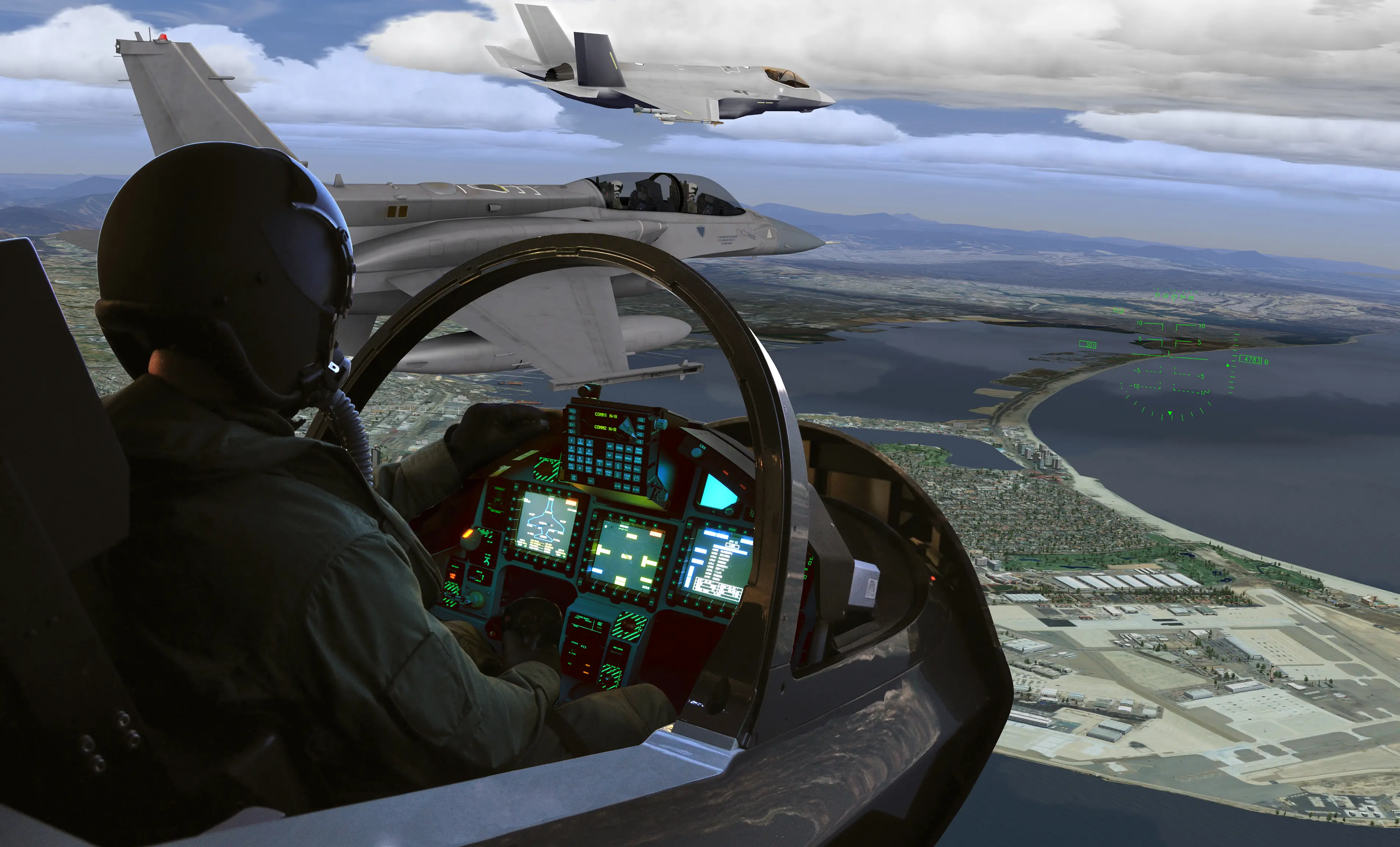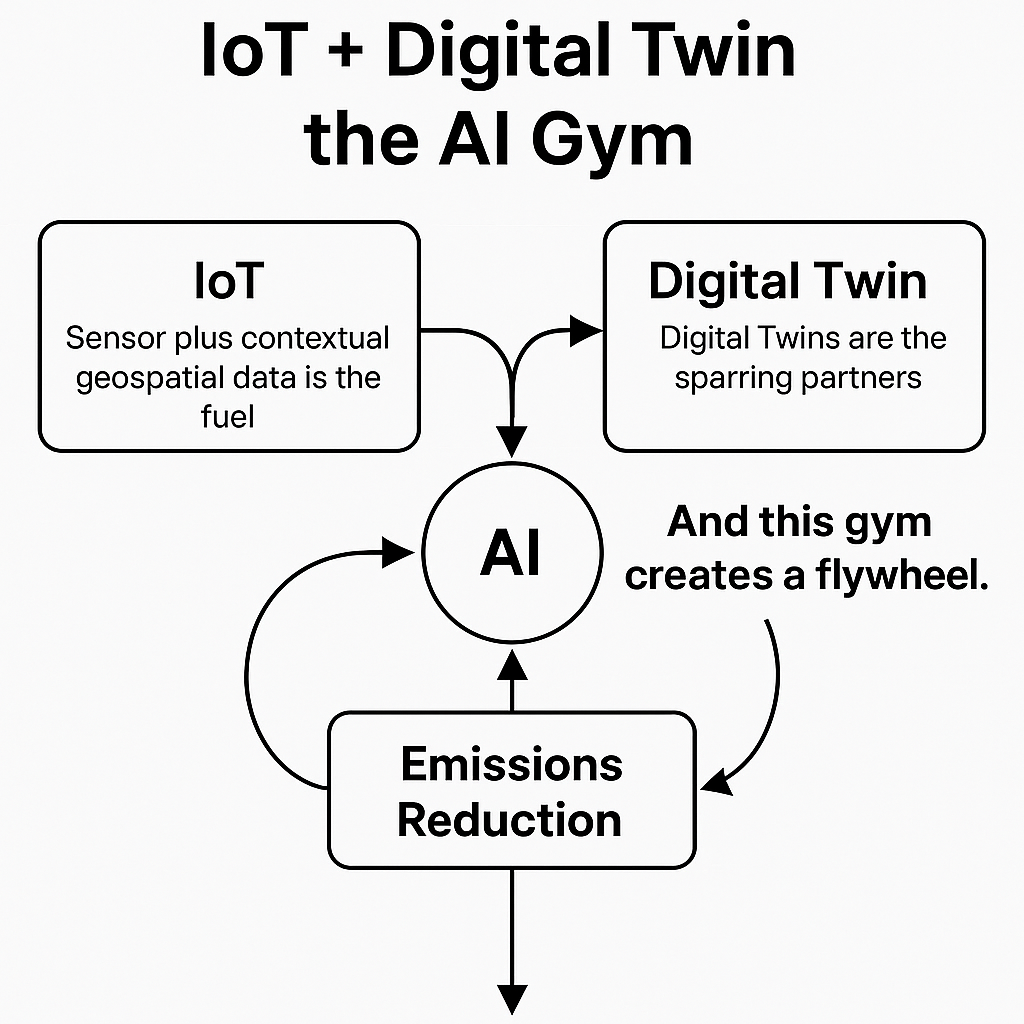The AI Gym
In June ‘26, I was invited to give a short talk at the 20th Anniversary Conference of the Harvard Center for Geospatial Analysis, where this year’s theme was Digital Twins. The following summarizes the key ideas I shared during my talk.
The AI Gym: Why IoT and Digital Twins Are the Key to Better AI
We live in a world where sensors are silently reshaping everything around us. Embedded in pipelines, buildings, vehicles, and satellites, they form a vast, invisible infrastructure—the Sensor Web. When I first envisioned this 20 years ago during my PhD, I imagined a world where sensor networks seamlessly integrate into our lives, just as Mark Weiser foresaw with ubiquitous computing. Today, we’re closer than ever.
But this transformation isn’t just about sensors. It’s about the powerful fusion of IoT, AI, and Digital Twins. Together, they form the nervous system, brain, and mirror of our increasingly intelligent infrastructure. Imagine a world with no wait, no waste, and no safety accidents—because this digital nervous system of the physical world is proactively working in the background on our behalf.
To realize this AI-powered infrastructure, we must train our AI systems—and that training doesn’t happen in a vacuum.
IoT + Digital Twin is the AI Gym.
Sensor data, combined with contextual geospatial information, is the fuel. It provides the where, when, what, why—and what’s next—of physical operations. This rich stream of operational intelligence, actions, and outcomes captures everything from equipment behavior and environmental conditions to human interventions and their consequences. When properly structured and time-aligned, this data forms the foundation upon which AI can detect patterns, learn cause-effect relationships, generate predictions, and trigger actions in the physical world.
Digital Twins are the sparring partners. They provide a dynamic, high-fidelity simulation environment in which AI can learn the intricate behaviors of physical assets and systems without real-world risk. Here, AI experiments, fails, and improves by interacting with a virtual replica that faithfully mirrors its physical counterpart—down to the finest details—and even generates synthetic data to enrich real-world observations. This concept isn’t new: the aviation industry has relied on it for decades. High-fidelity flight simulators—such as those from CAE Inc.—render virtual worlds at 60 frames per second, exposing trainee fighter and commercial pilots to extreme scenarios. By practicing in these “digital twins,” pilots make split-second predictions and judgments in a safe setting, so that when similar crises occur in reality, they’ve already honed their responses. The only difference today is that our advanced AI can play the pilot role, learning and adapting through the same digital-twin training paradigm. And just as flight simulators revolutionized aviation training, digital twins are now poised to transform how AI is trained across sectors—from energy to manufacturing to logistics.
Together, they create the environment where AI learns, experiments, fails, and improves. This isn’t just a metaphor—it’s a system design principle. The better the gym, the better the AI.

And this AI Gym creates a Flywheel.
As AI trains in these digital environments, it helps generate better Digital Twins. These, in turn, produce more precise data, sharper simulations, and faster feedback loops. The gym strengthens itself over time. The result? Organizations with the best gyms gain compounding advantages: accelerated innovation, smarter automation, and superior outcomes.

A Real-World Example: Emissions Reduction.
Methane emissions data today is scattered across disconnected sensors and fragmented formats. But if you can unify this data into a coherent sensor web, simulate it using Digital Twins, and loop it through AI trained on context and consequence—you unlock a predictive, adaptive, and actionable system. It doesn’t just monitor emissions. It acts on them. Over time, it learns to reduce emissions more effectively—first in the virtual world, then validated in the real one.
This is the edge. Whoever builds the best gym trains the strongest AI—and makes the greatest impact.
At SensorUp, we are building this gym for emissions reduction. What “gyms” are you building or envisioning in your industry?